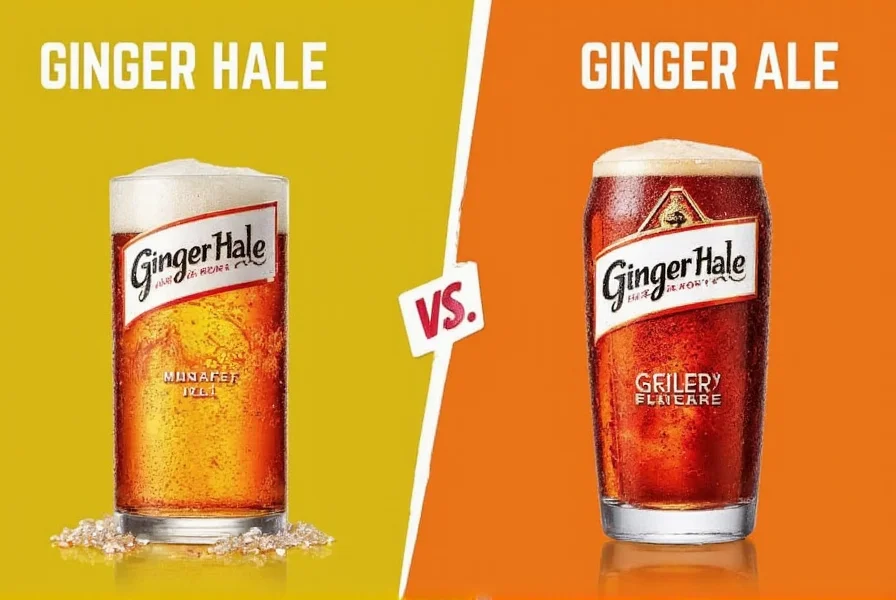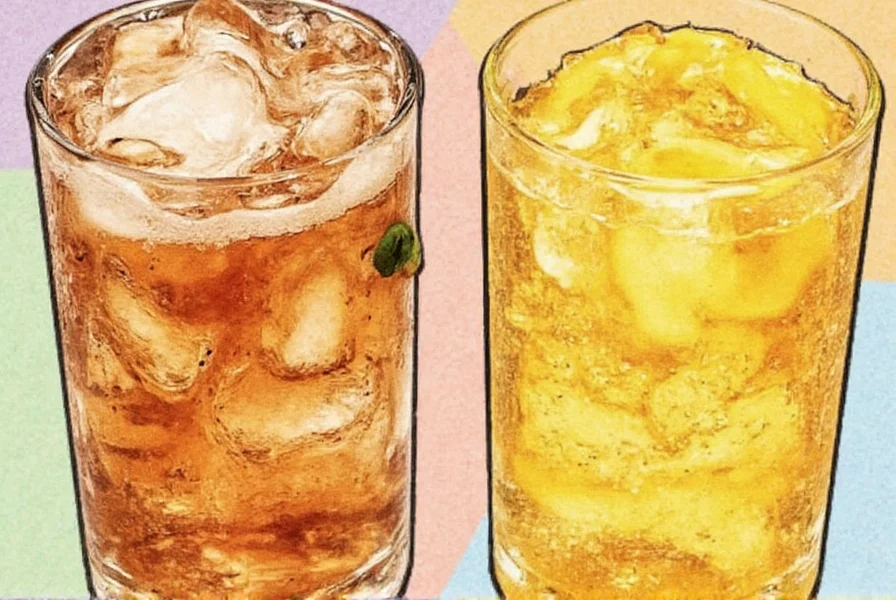If you're searching for information about "ginger hale," you're likely looking for details about ginger ale, the refreshing carbonated drink made from ginger root. This common misspelling happens because "hale" and "ale" sound similar when spoken. Understanding the difference between these terms is essential for finding accurate information about this popular beverage.
What Exactly Is Ginger Ale?
Ginger ale is a carbonated soft drink flavored with ginger root. Unlike its more robust cousin ginger beer, which traditionally undergoes fermentation, commercial ginger ale typically uses ginger extract or flavoring added to carbonated water and sweeteners. The beverage comes in two primary styles:
| Style | Characteristics | Origin |
|---|---|---|
| Golden/Dark Ginger Ale | Stronger ginger flavor, amber color, more authentic ginger taste | Original style developed in Ireland and Scotland |
| Dry/Regular Ginger Ale | Milder flavor, lighter color, created as a mixer for cocktails | Developed in Canada and the United States |
The History Behind Ginger Ale
Ginger ale's origins trace back to 19th century Ireland and Scotland, where people brewed ginger beer as a fermented beverage. The non-alcoholic version we know today as ginger ale emerged in the 1850s when Canadian pharmacist John McLaughlin created "Canada Dry Pale Ginger Ale" in 1904. This lighter version quickly gained popularity, especially during American Prohibition, when it served as a mixer for alcoholic beverages.
Understanding the historical context helps explain why many people search for "ginger hale" when looking for information about this beverage's background and evolution.
Ingredients and Nutritional Profile
Traditional ginger ale contains:
- Ginger root extract or flavoring
- Carbonated water
- Sweeteners (sugar, high-fructose corn syrup, or artificial sweeteners)
- Citric acid
- Natural flavors
A standard 12-ounce serving of regular ginger ale contains approximately 124 calories and 32 grams of sugar. Sugar-free versions use artificial sweeteners but lack the authentic ginger flavor profile. For those interested in what is ginger ale made of, the quality varies significantly between commercial brands and homemade versions.
Health Benefits and Considerations
Ginger ale's potential health benefits primarily come from its ginger content. Ginger has been studied for its:
- Nausea relief properties, particularly for morning sickness and motion sickness
- Digestive aid qualities that may reduce bloating and gas
- Anti-inflammatory effects
- Potential to alleviate migraine symptoms
However, most commercial ginger ales contain minimal actual ginger and high sugar content, diminishing these potential benefits. For ginger ale for nausea to be effective, choose brands with higher ginger content or consider homemade versions. Is ginger ale good for you largely depends on the specific product and your health goals.
Ginger Ale vs. Ginger Beer: Understanding the Difference
Many people confuse these two beverages, contributing to misspellings like "ginger hale":
- Ginger beer traditionally undergoes fermentation with a "ginger beer plant" (a symbiotic culture), resulting in a stronger, spicier flavor and sometimes a small alcohol content
- Ginger ale is typically carbonated water with ginger flavoring added, milder in taste, and non-alcoholic
The difference between ginger ale and ginger beer matters for both culinary uses and potential health benefits. Ginger beer generally contains more actual ginger and less sugar than commercial ginger ale.

Culinary Applications Beyond Drinking
Ginger ale serves multiple purposes in the kitchen:
- As a mixer in cocktails like Moscow Mules
- In marinades for meats (the enzymes in ginger help tenderize)
- As a base for fruit punches and mocktails
- In baking for ginger-flavored cakes and cookies
- As a remedy for upset stomach when sipped slowly
How to Make Authentic Homemade Ginger Ale
For those seeking the health benefits of ginger without excessive sugar, homemade ginger ale offers a superior alternative. Here's a simple method for how to make homemade ginger ale:
- Peel and grate 1 cup of fresh ginger root
- Boil with 4 cups of water for 10 minutes
- Strain and add 1/2 cup sugar or honey while still warm
- Cool to room temperature
- Add 1/4 teaspoon baking soda (for carbonation)
- Pour into bottles with tight lids and refrigerate
This method produces a naturally carbonated beverage with significantly more ginger content than most commercial versions. The fermentation process enhances both flavor and potential digestive benefits.
Choosing the Best Ginger Ale
When selecting ginger ale, consider these factors:
- Check the ingredient list for actual ginger root or extract
- Look for brands with higher ginger content for better health benefits
- Consider sugar content based on your dietary needs
- Golden-style varieties typically contain more ginger than dry-style
- Artisanal and craft brands often provide more authentic flavor
Understanding these distinctions helps clarify why some people might search for "ginger hale" when they're actually interested in premium ginger ale options with genuine ginger content.
Conclusion
The term "ginger hale" represents a common misspelling of ginger ale, the beloved ginger-flavored carbonated beverage. Whether you're interested in its history, health benefits, or culinary applications, focusing your search on "ginger ale" will yield more accurate and helpful information. By understanding the difference between ginger ale and similar beverages, and knowing what to look for in quality products, you can make informed choices about incorporating this refreshing drink into your lifestyle.











 浙公网安备
33010002000092号
浙公网安备
33010002000092号 浙B2-20120091-4
浙B2-20120091-4